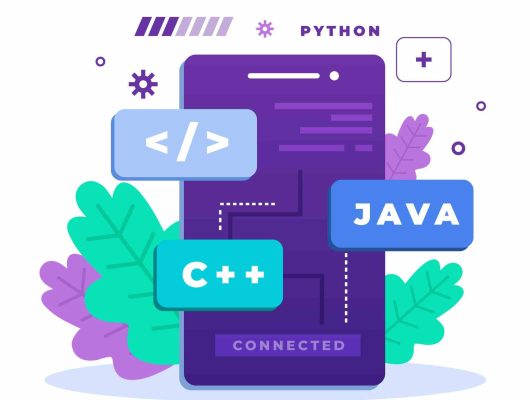
Integrating Feedback Loops for Iterative Improvement
In a world where technology is growing rapidly, integrating feedback loops in agile software development has become essential.
Using it, development teams can refine their processes and enhance the quality of the application for a better user experience.
But what exactly are feedback loops, and how do they foster such remarkable outcomes? Want to uncover the secret behind it.
Let’s find out. Dig deeper into this ultimate guide to understand what precisely a feedback loop is and why it is essential.
Table of Contents
1. What are the Feedback loops?
A feedback loop is an ongoing process where feedback is the subsequent tool for instant improvement. It is all about collecting, evaluating, and implementing. Essentially, it is a continuous dialogue between your organization and its surroundings, which allows you to
- Make rapid adjustment
- Introduce novel ideas
- Satisfy the evolving needs of your target population.
Remember that feedback loops usually begin early in the design process with wireframes or mockups. This early user feedback saves time and helps build a more substantial base for the final product.
How Does Feedback Loops Enable Iterative Progress? When teams embed feedback collection throughout a project, rather than treating it as a one-time task, they create a structure of iterative feedback. This approach supports continuous learning and real-time course correction, helping development stay aligned with user needs at every step.
2. Type of Feedback Loops

At a high level, there are two main types of feedback loops in product and system development: positive feedback loops and negative feedback loops. Some contexts also differentiate between open loop and closed loop feedback, which we’ll explore briefly below.
2.1 Positive feedback Loop
Positive feedback loop is a way of enhancing positive outcomes such as increased user engagement and growth. It involve
- Boost user engagement
- Promoting actions that increase the app’s user base.
- Enhances User Retention
- Providing Incentives for social sharing.
Common examples include rewarding users for completing in-app actions (gamification) or encouraging referrals through incentives.
2.2 Negative Feedback Loops
Negative feedback loops work to preserve quality and balance to satisfying user experience. It assists in efficiently managing system resource and helps in maintaining user engagement. Additionally it
- Allow the system to regulate automatically
- Respond to the changes that are opposite to the instructions
- Assist in stabilizing the systems
- Involve in deduction of errors that cause malfunction in application
Examples in development workflows include Bug reporting systems that trigger hotfixes or monitoring server uptime and scaling automatically.
2.3 Open vs. Closed Feedback Loops
While positive and negative loops define direction, open and closed loops define completeness.
| Type | Description | Example |
| Open Loop | Feedback is collected but not acted upon. | App store reviews that go unmonitored. |
| Closed Loop | Feedback is collected, analyzed, and actioned with follow-up. | A user submits an in-app survey, the team updates the feature and the user receives a follow-up message explaining the change. |
3. How Does Feedback Loops Work?

To understand the loops’ workings, you need to understand their process. So, let’s uncover it.
3.1. Data collection
The feedback loops begin by gathering feedback from the customers. This allows the team to identify the area of improvement regarding their product.
But before you begin, consider where people usually connect with your product or service. Then, decide how you’ll get feedback:
- Feedback in the app
- Chatting inside an app
- Request boards for features
- Reviews of app stores
- Social networking sites
- Forums for community
- Polls and studies of users
- Posts in a forum
3.2. Data analysis
Then, there comes the analysis of customer feedback to identify patterns, trends, and pain points. This includes
- Gathering
- Organizing
- Analyzing
3.3. Strategic Decision Making
After analyzing the user feedback, the time comes to make decisions. The application developer carefully understands the user’s pain points and focuses on them for a better user experience. This involves getting feedback on features in an application, analyzing it, and thoroughly planning to address it.
Ensure that your development team properly understands the feedback. Therefore, when you tell people about your choices and results, make sure to:
- Summarize the comments into main categories or themes to make the information easy to find.
- Find the most important and useful insights that align with your product goals and objectives, and prioritize them.
- Put the feedback in the context of the bigger plan or road map to help people understand its importance.
- Use pictures to highlight important parts of your summary and keep it short and exciting.
3.4. Implementation of Changes
It’s time to implement changes already discussed in the decision-making process. This process involves making all the necessary adjustments that customers raised, such as
- Adding a user-friendly app feature
- Using simple icons
- Making possible policy changes
- Dealing with application glitches, etc.
3.5. Monitoring Customer Reactions
Retaking the custom reaction monitoring process before implementing any potential change is crucial. During this second phase, you can collect user feedback regarding the improvements. But while monitoring
- Verify whether the changes align with the customer’s specifications.
- Does it provide any advantages for them or not?
- If not, then? Reassess their requirements subsequently.
- If so, then? After that, you are ready to proceed.
Remember that it’s a continuous procedure that guarantees your program satisfies the user’s requirements.
3.6. Recycling
Refocus your monitoring efforts after implementing the software changes. Consider the customer’s feedback, process it, formulate a strategy, and execute it again. Note that this recursive process keeps the product fresh and adaptable to the market’s needs.
Find Out more about Understand User Centric Design in Mobile App Development
4. Feedback Looping: A Crucial Tool for Iterative Process
So, why is it so crucial to go through these steps? Here are five factors to think about:
4.1. Identifying the needs of the client
Through feedback loops, app developers can gain a deep understanding of user needs and wants. This paves the way for customer-centric innovations tailored to products and services.
For Example
Customers request specific items using an online food app. This would enable the shop to meet each consumer’s unique requirements, resulting in their satisfaction.
4.2. Enhancement of the user experience
One of the best ways to understand user interfaces is through feedback loops. Software development organizations can benefit from user usability feedback to enhance the user experience and engagement.
Most importantly, it makes it easier to pinpoint areas of discomfort.
4.3. Ongoing Enhancements
Given the rapid pace of technology advancement, it is imperative that software development companies adapt swiftly. By listening to and acting on user feedback, an application platform can improve delivery times and customer experience.
4.4. Improving Loyalty for Customers
One way to demonstrate interest in client opinions is to ask for their input. Resulting is building brands reputation and customer loyalty.
4.5. Decrease in Malfunction
First and foremost, feedback loops serve as early warning sensors. Companies can detect emerging issues or negative trends promptly. Software development organizations can protect their reputations and head off problems by promptly fixing faults.
Examples of Feedback Loops
To fully understand how iterative feedback loops function, let’s explore a few examples.
1. Agile Sprint Planning
In agile development, feedback loops occur after every sprint. Teams gather insights from sprint retrospectives and immediately use them to improve the next cycle. This allows for iterative refinements, resulting in faster, more user-aligned deliveries.
2. DevOps Deployment Feedback
After a feature is deployed, DevOps teams monitor logs, crash reports, and user feedback to identify areas for improvement. These insights are looped back into development, ensuring quality and minimizing downtime.
3. User Experience (UX) Testing
During early UI/UX testing, feedback from users interacting with mockups is used to adjust navigation, button placements, and content clarity. This loop helps create interfaces that users find intuitive.
4. Customer Support Feedback
Support tickets and chat logs are analyzed to identify common user pain points. These patterns inform product updates and new features, reducing future complaints.
5. Feature Rollout A/B Testing
When releasing a new feature, companies test different versions (A/B testing) and collect feedback on performance and user satisfaction. The version with better metrics is retained, and learnings are applied to future rollouts.
Final Thoughts
To sum up, a feedback loop is a must-have for attracting customers and improving software quality. Firms may meet customer needs by adjusting the cyclic process of planning, gathering, analyzing, and applying user input.
Product developers can improve, boost customer loyalty, and minimize risk by adopting user data-driven adjustments. In a world where technology is always changing, feedback loops are essential for keeping goods relevant and user-friendly.
So, if you are planning to add it in your application, but do not know how? Then consider Onyxtec whose team of experts develop the application and its features tailored to the needs of the customers.
FAQ
a. How can feedback loops improve DevOps capabilities?
Feedback loops in DevOps foster continuous improvement, code quality, agility, performance, customer happiness, cost effectiveness, risk reduction, and cooperation.
b. What is iterative improvement?
An iterative iteration is a way of enhancing product features during the development. This helps the development team to figure out essential app features without overloading it.
c. What are the two iterative procedures?
The two Iterative approaches include static methods which are less sophisticated, more old-fashioned, and productive. And the unstable methods that have the potential to produce excellent results.
d. What is iterative feedback in software development?
Iterative feedback is a cycle of collecting, analyzing, and acting on user or stakeholder input throughout the development process. Instead of waiting for post-launch reviews, teams continuously refine the product based on real-time insights, making the final result more aligned with user needs.
e. What are the main types of iterative processes?
The two main types of iterative processes are:
- Static iteration: Follows a fixed structure and scope; used in traditional project cycles.
- Dynamic iteration: Flexible and responsive to change; used in agile, design thinking, and DevOps workflows.
Each approach supports different levels of innovation and risk.
f. How can we increase the quality of our feedback?
To maintain continuous quality improvement
- Monitoring and evaluating the output
- Figure out the issues
- Make changes
- And reassessment it when necessary.
Remember that, businesses may keep their products and services high-quality by implementing feedback loops for quality control.




